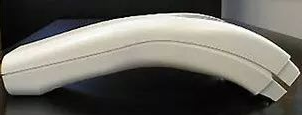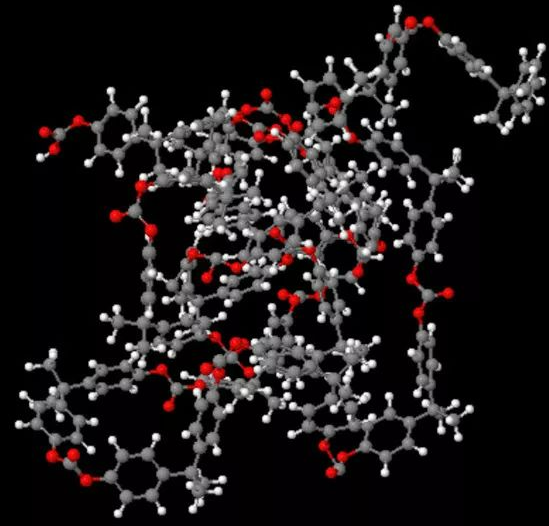For those who are engaged in injection mold making and injection molding, deformation of plastic parts is one of the biggest headaches and one of the main reasons for high product scrap rate. We have been searching for the real cause of deformation to find a way to control it. With the help of advanced computer analysis software such as moldflow, we try to control the deformation of plastic parts with our experience, but the problem recurs again and again.
Plastic material is like an incomprehensible savage girlfriend, although most of the time as gentle as water, but launched a rage to make people helpless, why? The bottom line is that we do not know enough about her, because not enough to understand, so it feels difficult to manage.
This article attempts to plastic material characteristics, product design, mold design, molding process and other aspects of the real causes of plastic deformation and factors affecting the deformation, so as to help us find a better way to control deformation in the work.
1.plastic deformation phenomenon
Plastic injection deformation phenomenon refers to the molded products appear to deviate from the design shape of the situation. Deformation can lead to
Product functional defects, can not meet the requirements of use
Product assembly problems, even if the deformation can sometimes be overcome by assembly, but the resulting stress will make the product may be used in the process of external forces cracking
Product appearance problems, unable to meet the appearance requirements
Other problems
The following are some common pictures of deformation of plastic molded products

Plastic frame deformation, need plastic jig deformation

Deformation of plastic thin-walled containers

Deformation of electronic products

Poor assembly due to deformation of the face and bottom shell of the sweeper

Deformation due to poor product design: on the left is an improved product structure with uniform wall thickness; on the right is a poor product design
2.The nature of deformation
Plastic deformation is a variety of phenomena, and the essence of the role of internal stress in injection molding parts. Product deviation from the design of the shape is the role of force, there is no force on the product will not deviate from the design of the shape. The amount of deformation is determined by the size of the internal stress, on the one hand, the ability of the product structure to resist internal stress, that is, the rigidity of the product structure. The deformation of injection molded parts is essentially a kind of stress release, that is, the internal stress of the product through the deformation of the product to achieve a certain release.
We all know that any plastic material has a theoretical shrinkage rate, such as: ABS 0.3-0.5%, PC 0.5-0.7%, PP 1.5-2.0%, and so on, which indicates the number of mold steel and the corresponding size of the plastic parts of a shrinkage rate, provided by plastic material suppliers, from the laboratory, is only a theoretical reference data. In the actual injection molding process, will the plastic material shrink 100% according to this data? Is the shrinkage rate uniformly distributed in the mold cavity?
The answer is obviously no. If the shrinkage is 100% according to the design, then the size of the plastic part will undoubtedly reproduce the design faithfully; if the shrinkage is uniform, the product will not be deformed, just like we put the shrinkage rate to the product in UG or CAD, the product is uniformly bigger or smaller, there will not be the slightest deformation.
Because of the shrinkage characteristic of plastic material, when the melt glue is filled with mold cavity, the material starts to cool and cure, producing volume shrinkage, and this time the deformation starts to appear. The structure of plastic parts is complex, so the structure of the mold is also complex, because of this complexity, resulting in the injection molding production process of each area of the mold cavity melt glue filling speed, mold cavity pressure distribution, heat transfer, etc., there are absolute differences, can not reach an absolute uniform state, so the resulting shrinkage unevenness is absolutely there, uneven shrinkage leads to product internal stress, internal stress is the nature of the role of the injection molding parts. The effect is the essence of the deformation of the injection molded parts.
Uneven shrinkage in the plastic parts is absolutely there, so the deformation of plastic parts is also absolutely there, the difference is only the degree. All our efforts are not to eliminate the deformation, but to control the deformation within the permitted range.

The residual stress distribution at the root of the tendon position of the transparent product under polarized light irradiation. The picture on the left shows a smaller residual stress due to the smaller rounded corners; the picture on the right shows a larger rounded corner and a higher residual stress.

Stress distribution condition of transparent CD box products
3.The root cause of deformation
To explore this issue clearly, we must start from the plastic material, starting from the polymer structure of plastic materials. Do not understand this, we have no way to really understand the causes of deformation.
We all know that plastic is a polymer material, long molecular chain, molecular weight, it has a very long main chain, the main chain and the edge of the branch chain, as shown in the following diagram:

3D model of a molecular monomer of a non-crystalline plastic PC

3D model of the molecular chain structure of a non-crystalline plastic PC

3D model of a semi-crystalline plastic PA66 molecular chain
These are molecular microstructures that can only be observed with the help of a high degree of microscopy, and textual descriptions pale in comparison; you have to see the real thing to get a visual impression. But observing and studying the molecular structure in microscopic state is what the laboratory needs to do. For us plastic users, we are not in a position to observe this every day with the help of a microscope.
The molecular chain structure of plastic determines the type of plastic material. The general characteristics of plastic are: the larger the molecular weight, the longer the molecular chain, the less fluid the plastic is, the more difficult it is to mold, and therefore the better its mechanical properties such as strength and impact resistance. This description is very abstract, in order to better understand this statement, we need to use our unlimited imagination: imagine a plastic molecule as an earthworm, so that the image is much more helpful to help us explain some molding principles or phenomena.
For example, a PC material is a myriad of long and large earthworms tightly entwined together and frozen at low temperature to lose activity, while a PC material product is more earthworms tightly entwined (non-crystalline plastic); an ABS material is a myriad of generally long and large earthworms tightly entwined together and frozen to lose activity. When the material is heated, these frozen earthworms gradually regain their activity and slowly spread out until they are able to flow, so they can enter the mold cavity driven by the injection molding machine screw and freeze again to become the product we need. The length of the molecular chain is the length of the earthworm, and the mass of the molecular chain is the mass of the earthworm.
Large earthworms are difficult to flow, while small earthworms are easy to flow; the larger the earthworms are twisted together, the greater the force represents the better the mechanical strength of the plastic; the tighter the earthworms are twisted, the more they can resist external forces, representing the better the strength of the product.

The molecular structures of the three physical states of non-crystalline and (semi-)crystalline plastics. The molecules of non-crystalline plastics are tightly and disorderly entangled below TG; the molecules of (semi-)crystalline materials are partly ordered and partly randomly entangled below TG. Its molecular chains in the molten state are indistinguishable. tg glass transition temperature.
Crystalline plastic is actually semi-crystalline plastic, because in practice it is very difficult for all molecules to crystallize, so it is called semi-crystalline plastic.